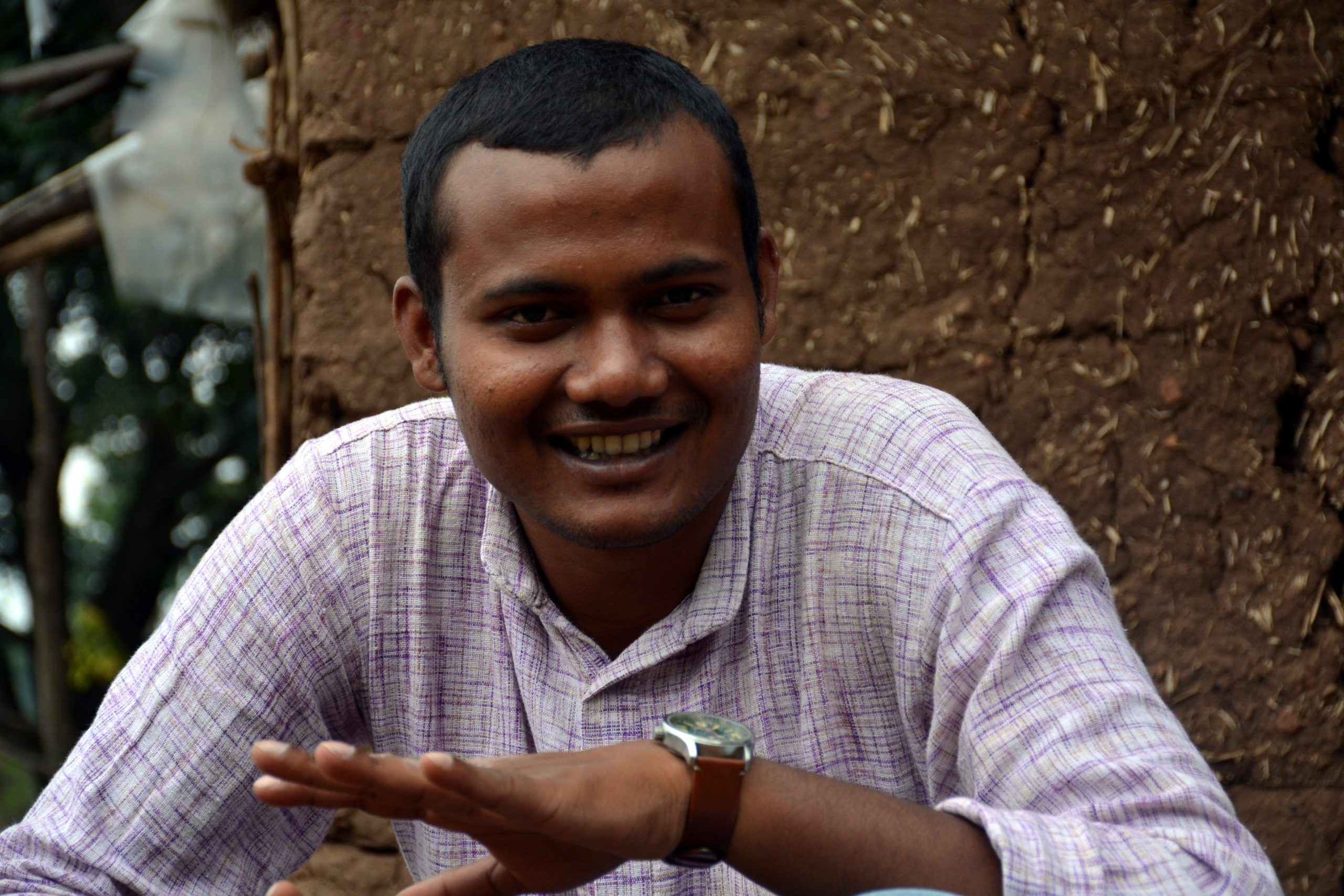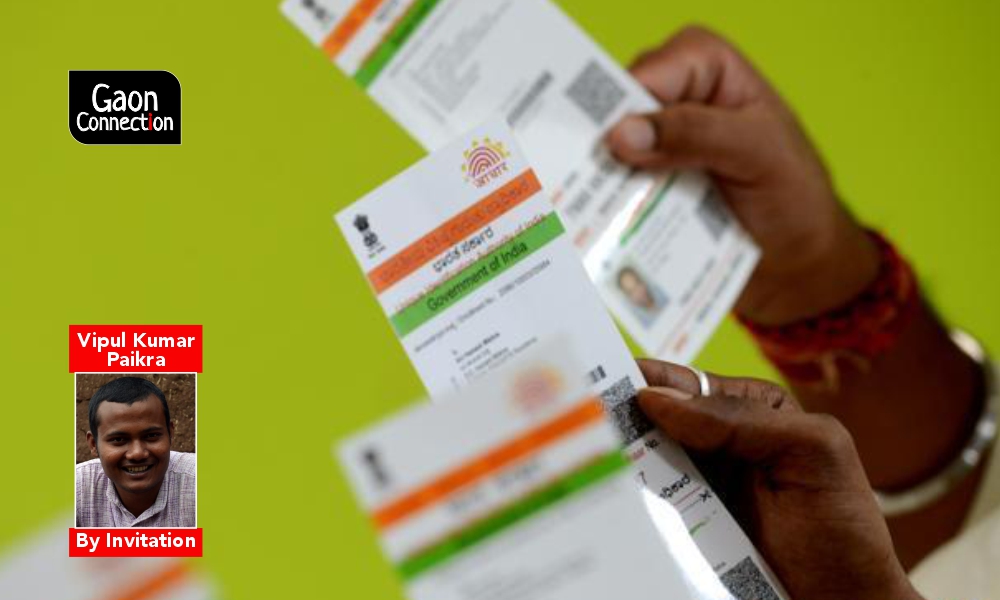Banking on Aadhaar
The Aadhaar card is indispensable to claim benefits from government welfare schemes. But, due to incorrect linking of the cards to bank accounts, Aadhaar card holders in rural areas, especially vulnerable women, are running from pillar to post, often for months on end, to rectify the mistakes.


Photo: Hardy Singh/flickr
Vipul Kumar Paikra and Samuel Durand
Madho Kunwar is an elderly widow, living in Chama village, Manika block, Latehar district of Jharkhand. She left the home of her in-laws after the death of her husband and only daughter nearly three years ago, to settle in Chama. She does chores at the homes of neighbours who give her food in return. She doesn’t have a house of her own so she sleeps over in the homes of her neighbours.
If Kunwar could receive the widow’s pension and rations she is entitled to, she may not have to be so dependent on others for her survival. But for that she needs an Aadhaar card, compulsory to claim social benefits in Jharkhand. However, in order to get an Aadhaar card, Kunwar will have to make the long journey of 20 kms to the block office at Manika, an arduous task for someone like her who rarely moves out of her village. Even if she did, she is doubtful if anyone will give her a patient hearing.
Lost in Transit
Panua Devi, who lives in the same gram panchayat as Kunwar has an Aadhaar card, but three years ago, her Aadhaar number was wrongly “seeded” in the pension database of her neighbour Sobha Devi. Since then, Panua’s monthly pension (Rs 1,000 per month today), which should go to her bank account in Jharkhand Rajya Gramin Bank, goes into Sobha’s account in the Manika branch of the SBI.
The manager at the SBI was well aware of Panua’s problem. He told us, based on earlier experience, that this was likely to be the fault of The Mahatma Gandhi National Rural Employment Guarantee Act (MNREGA) functionaries, who often made mistakes when they linked job cards and bank accounts with Aadhaar. He expressed his inability to do anything to fix the problem and asked us to try the district welfare department.
At the nearby Jharkhand Rajya Gramin Bank branch, the manager suggested that we visit the MNREGA office to pursue the matter.
From Block to District and Back
Panua’s story is an example of a bank payment being diverted to someone else’s account by the Aadhaar Payment Bridge System (APBS). Hers is not an isolated example, even within the Manika block. At Patna village, Umesh Oraon’s MNREGA job card was linked to someone else’s bank account; Bhudni Devi’s MNREGA wages were also diverted elsewhere due to a typo in her Aadhaar number.
For the villagers of Manika block, visiting offices in the block and then travelling to the district office at Latehar that is 40 km away, to follow up, is very difficult. Even routine enquiries can take two days.
At Latehar, in a room filled with thick files and dusty cupboards, an officer explained that Panua had to either delink her Aadhaar from Sobha Devi’s bank account to link it to her own, or, she had to open a new account with Aadhaar authentication – as the APBS would automatically direct money to a person’s latest Aadhaar-linked account. But, either way she would have to approach the bank. He also said that Panua’s was not the first case of its kind. He strongly recommended she open a new bank account as it was a quicker solution as the bank would take a long time to rectify the mistake.
Clearly, rectification and redressal was an issue that was beyond the reach and capabilities of ordinary villagers. In three years, neither the bankers nor the officers have helped Panua recover her savings. She has been left to fend for herself.
Whether it is fraud or diversion of money, there is no clarity about how and where people could resolve Aadhaar-related problems. The official websites of government schemes are of little help. Likewise, government officials are rarely able to explain precisely what needs to be done. More often, they send villagers from pillar to post, and the desperate chase continues for years on end sometimes.
Aadhaar-enabled Fraud
The Aadhaar might have streamlined processes on behalf of the state, but it has also opened up new ways to cheat people and the grievance redressal mechanisms are hopelessly inadequate. Securing action on Aadhaar-enabled theft requires a lot of time and grit – often way beyond what vulnerable people can manage.
For instance, on September 6, last year, two people, saying they were representatives of a well-known gas agency in Manika convinced the elderly Nagina Bibi from Vishunbandh village in Manika block, to apply for a gas cylinder refill using a new biometric technique. For this, they asked for her Aadhaar card, a photograph, Rs 20 as a fee, and made her tap her finger several times on their biometric device. They gave her a ‘receipt’, which was actually a hand-written paper with only her name on it. Her niece, suspecting fraud, asked Nagina to go to her bank in Manika. To her horror, Nagina discovered that Rs 24,000 had been withdrawn from her account. That was a big part of Nagina’s savings from her MNREGA work.
Three days later, on September 9, Nagina Bibi, went with her husband to the Manika police station to file an FIR, where the police only agreed to accept a complaint letter. The line “immediate action should be taken” was removed from the letter and no receipt was provided. When the elderly couple insisted on an FIR, they were asked to come again the following day.
They decided to approach the superintendent of police (SP) in Latehar, but drew a blank there as they were not allowed to meet the SP, nor were they given a receipt for the letter of complaint they submitted. They sent another complaint letter by Speed Post on September 15. As of November 12, they had not received any response from the police.
An officer at the police station denied having any knowledge of Nagina’s case. At the SP’s office in Latehar, the officer in charge of the cyber cell suggested enquiring about the letter at the SP’s residential office, where a clerk confirmed that the letter had arrived on September 29, and had been forwarded to the cyber cell on October 10.
At the cyber cell, there was once again a wait before the computer operator could retrieve the letter. He then explained that he was on medical leave when the letter was received there. Nagina was asked to file another FIR two months after her initial request and this time the FIR was accepted, and the case is now in court.
Tip of the Iceberg?
Crimes of Aadhaar-enabled fraud leave little trace. But many such cases have come to light in Manika. Of them, was the scholarship scam, where money meant for the education of the underprivileged was being siphoned off fraudulently through the Aadhaar-enabled Payment System (AePS).
These instances are just a handful of particularly shocking examples of Aadhaar-related failures in the welfare delivery system. Who knows how many vulnerable citizens are simply turned away and their problems remain forever hidden from public gaze.
Vipul Kumar Paikra is an independent researcher based in Ranchi and Samuel Durand is a freelance journalist. Authors would like to thank Shireen Azam, Visvak Sen and Jean Drèze for their kind help with editing.
Views are personal.

